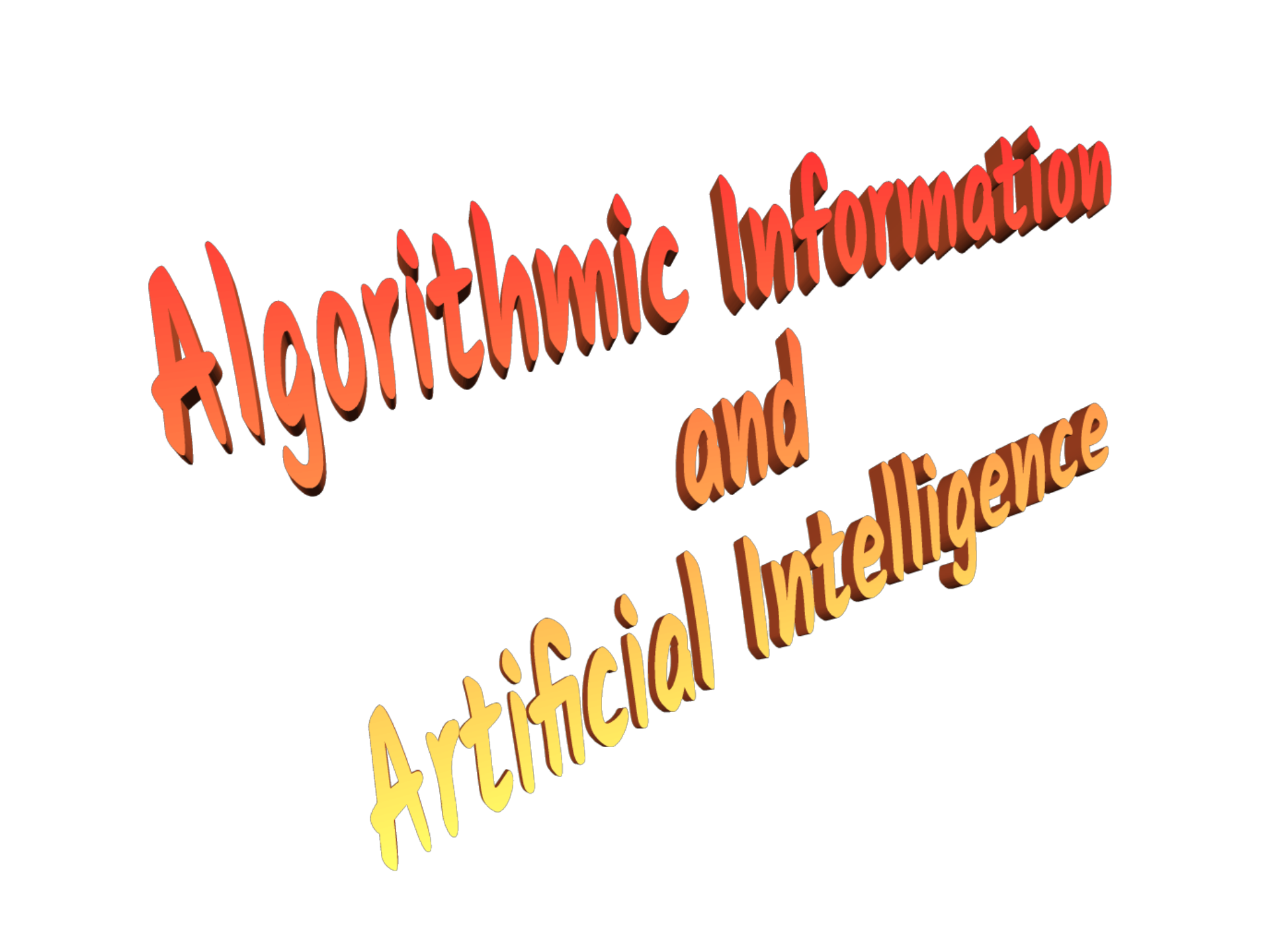

|
Telecom Paris
Dep. Informatique & Réseaux  J-L. Dessalles
← Home pageJuly 2021
J-L. Dessalles
← Home pageJuly 2021 |


IA325/IA703: Algorithmic Information and Artificial IntelligenceLecturers: Jean-Louis Dessalles
| and | Pierre-Alexandre Murena |
| Etienne Houzé |

Objectives
Content
| Chapter 1. | Description complexity |
Complexity measured by code length.
Complexity of integers. Conditional Complexity. |
| Chapter 2. | Measuring Information through compression |
Compressibility.
Language recognition through compression. Huffman codes - Complexity and frequency. Zipf’s law. "Google" distance - Meaning distance. |
| Chapter 3. | Algorithmic information applied to mathematics |
Incomputability of C.
Algorithmic probability - Algorithmic Information. Randomness. Gödel’s theorem revisited. |
| Chapter 4. | Machine Learning and Algorithmic Information |
Induction - Minimum Description Length (MDL).
Analogy as complexity minimization. Machine Learning and compression. |
| Chapter 5. | Subjective information and simplicity |
Cognitive complexity.
Simplicity and coincidences. Subjective probability & subjective information. Relevance. |
Slides
| Chapitre4 (compl & ML) |
Validation
- Answers to questions during the lab sessions are recorded and evaluated.
- Students will have to answer a short quiz on the last day.
- Students will make a small original contribution (typically, as a continuation of a lab work question)
- and present it orally.
This micro-study should emphasize the link with Kolmogorov complexity and Algorithmic Information. You are expected to choose a topic of study, and to do something for this project (typically write a small program). The topic of the project must be related to K-complexity.
Very soon:
- Indicate the topic you will address → Your project
- See others’ projects → Others’ projects
Before then end of the course
- Write you report → Please use this template: MSWord or LibreOffice or LaTeX
- Upload it → Uploading page
- Upload your program or any relevant material → Uploading page
Your small report will describe your project and what you found (typically: 3 or 4 pages, more if there are images). Don’t forget to include:
- Your name, date and context
- The title of your study
- The problem you addressed
- What you did + what you found
- A bit of theoretical reflection/extension about what you did.
- A bibliography (with weblinks)
Short bibliography
- Chaitin, G. J. (2004). On the intelligibility of the universe and the notions of simplicity, complexity and irreducibility. In W. Hogrebe & J. Bromand (Eds.), Grenzen und Grenzüberschreitungen, XIX, 517-534. Berlin: Akademie Verlag.Devine, S. D. (2014). Algorithmic information theory: Review for physicists and natural scientists. .
- Chaitin, G. J. (2005). Meta Math! The quest for Omega. Vintage Books, ed. 2006.
- Chater, N. (1999). The search for simplicity: A fundamental cognitive principle?. The Quarterly Journal of Experimental Psychology, 52 (A), 273-302.
- Downey, R. G. & Hirschfeldt, D. R. (2010). Algorithmic randomness and complexity. New York: Springer.
- Grünwald, P. D. (2007). The minimum description length principle. MIT press.
- Hutter, M. (2005). Universal artificial intelligence: Sequential decisions based on algorithmic probability. Berlin: Springer.Li, M. & Vitányi, P. (1993). An introduction to Kolmogorov complexity and its applications (3rd ed.). New York: Springer Verlag, ed. 1997.
- Li, M. & Vitányi, P. (1993). An introduction to Kolmogorov complexity and its applications (3rd ed.). New York: Springer Verlag, ed. 1997.
- Solomonoff, R. J. (1997). The discovery of algorithmic probability. Journal of Computer and System Sciences, 55 (1), 73-88.
- Solomonoff, R. J. (1978). Complexity-based induction systems: Comparisons and convergence theorems. IEEE transactions on Information Theory, 24 (4), 422-432.
- Vitányi, P. & Li, M. (2001). Simplicity, information, Kolmogorov complexity and prediction. In A. Zellner, H. A. Keuzenkampf & M. McAleer (Eds.), Simplicity, inference and modelling: Keeping it sophisticatedly simple, 135-155. Cambridge, UK: Cambridge University Press.
- Zenil, H. (2013). A computable universe: understanding and exploring nature as computation. World Scientific.
- Delahaye, J.-P. (1994). Information, complexité et hasard. Paris: Hermès, ed. 1999.
- Delahaye, J-P. (2013). Définir et mesurer la complexité : La théorie algorithmique de l’information. 1024 - Bulletin de la Société Informatique de France, 1, 35-53.
- Dessalles, J.-L. (2008). La pertinence et ses origines cognitives - Nouvelles théories. Paris: Hermes Science.
